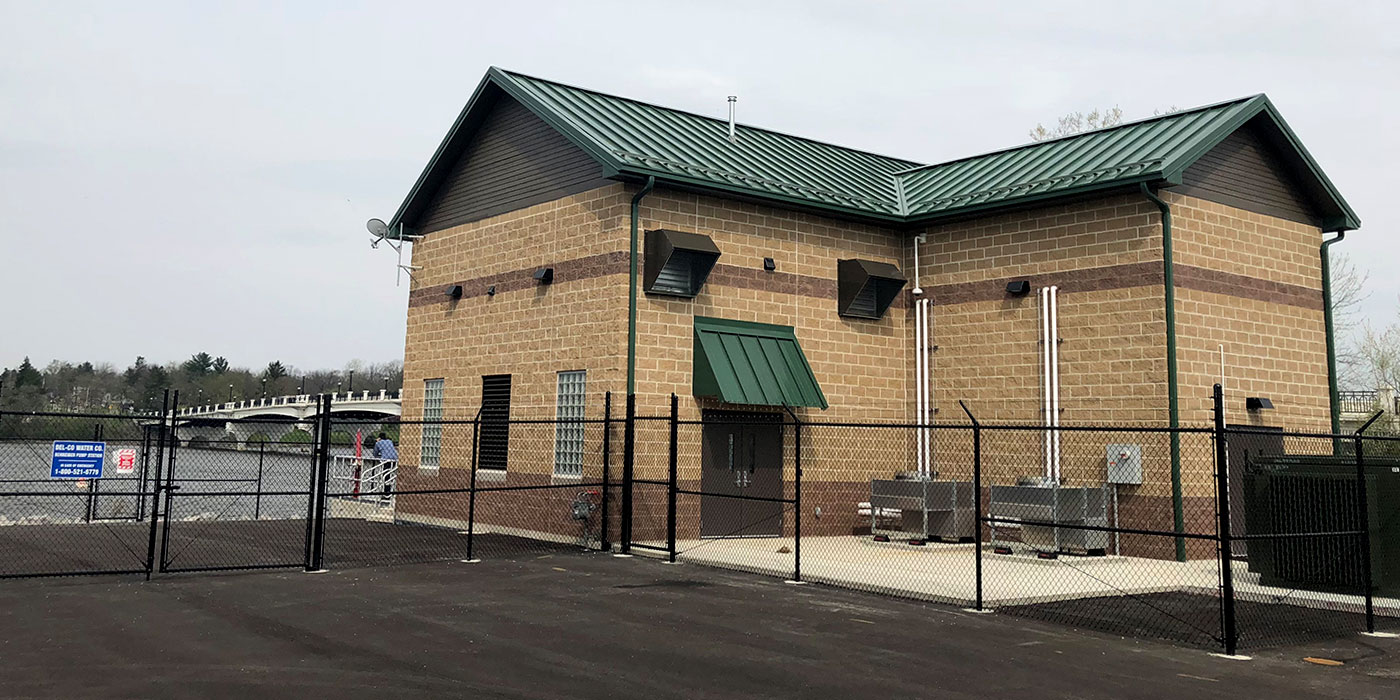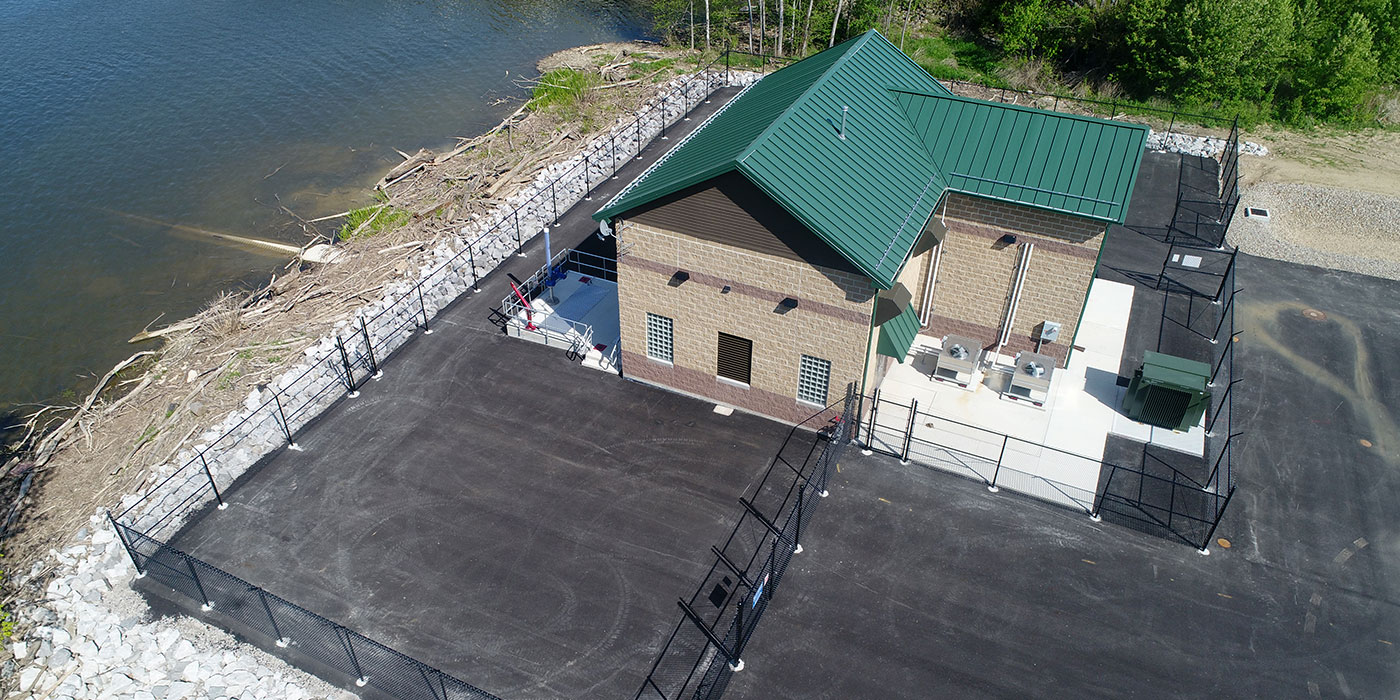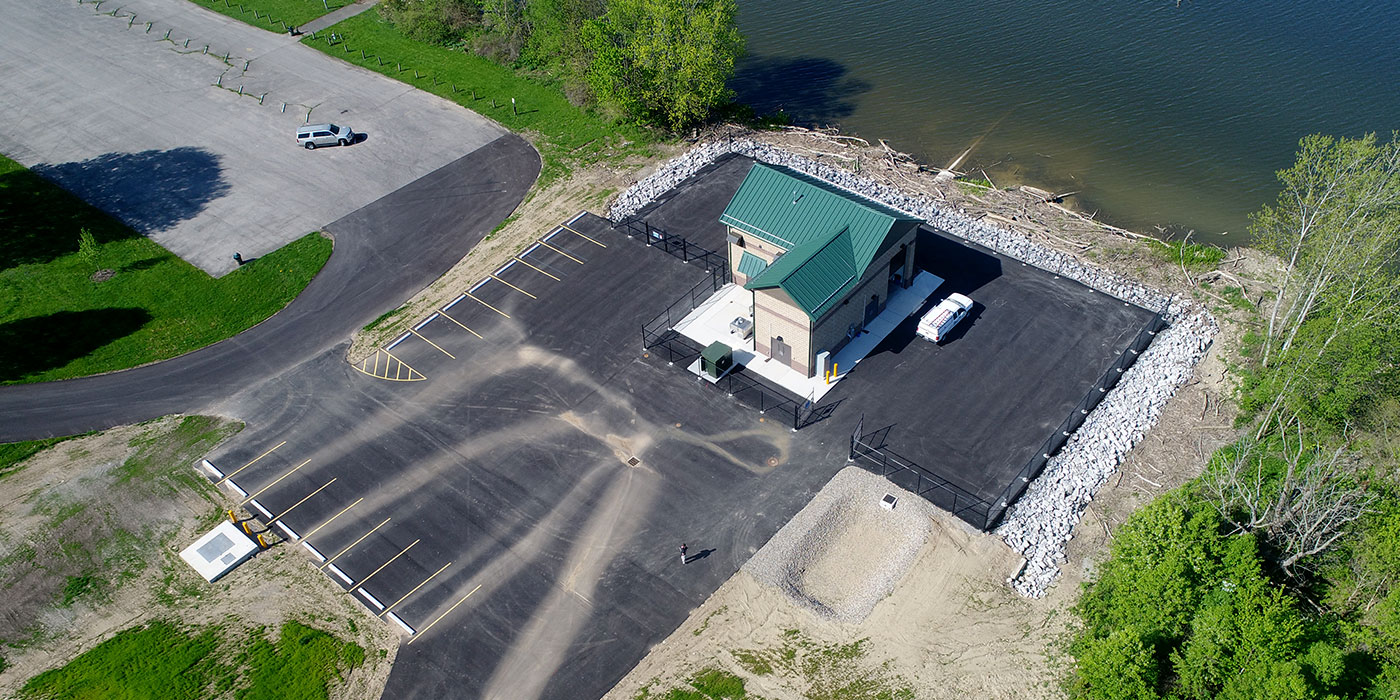Challenge
Del-Co needed a solution to better serve Central Ohio residents for years to come with a positive social impact on the community.
Services Involved
- Architecture
- Building Codes
- Distribution and Transmission Lines
- Electrical Engineering
- Facility Design
- Mechanical Engineering
- Permitting
- Plumbing Engineering
- Pump Station Design
- Regulatory Compliance Assistance
- Site Civil Engineering
- Social, Natural, and Cultural Studies
- Structural Engineering
- Wetland Permitting and Mitigation
Awards
2019 Honor Award
American Council of Engineering Companies (ACEC) of Ohio
Lawrence R. Schreiber Pump Station + Transmission Main
The Del-Co Water Company serves approximately 44,000 customers throughout eight counties in the northern area of the Central Ohio region. Their water systems have an operating capacity of 33 million gallons per day (MGD). Del-Co’s main water supply is the Olentangy River, which serves their Olentangy Water Treatment Plant.
In recent years, during periods of drought, Del-Co’s water source supply reached levels requiring Del-Co to use their reserve supply out of their above-ground reservoirs. In part because of this drought, Del-Co partnered with the City of Columbus to construct the Upground Reservoir project along the Scioto River. The completion of this project allowed Del-Co to access source water from the Scioto River, located approximately 3.5 miles west of their Olentangy Water Plant.
Through the Schreiber Pump Station project, Del-Co received 16 MGD to use as a redundant water supply for their water system. This allows Del-Co to better serve the central Ohio area for years to come—providing a positive social impact to the community.
Project Challenges
The project did not come without its share of design and construction challenges:
- The pump station and 36-inch waterline were constructed in an area with difficult subsurface conditions. Limestone rock formations were approximately 2 feet below the surface, which slowed the project’s construction since the pump station was more than 25 feet deep.
- The station’s proximity to the reservoir made excavation/construction practices more difficult. The station’s intake system’s original design was to be an open-channel on the surface of the reservoir. This was cost prohibitive so the intake design was changed—from an open-channel installation to a subsurface steel pipe intake, which required microtunneling operations. It is rare to use microtunneling as the installation method in the Central Ohio area on water projects. Microtunneling is also innovative as it uses a laser-guided tunneling machine to pull a pipe through a newly dug tunnel.
In addition to the design and construction challenges, the project involved substantial coordination challenges between multiple entities, including: the City of Columbus; the Ohio Department of Transportation; Delaware County; CSX Railroad; multiple townships; the Ohio Environmental Protection Agency; the Ohio Department of Natural Resources; the United States Army Corps of Engineers; the State Historic Preservation Office; and almost 40 property owners for securing easements along the waterline.



